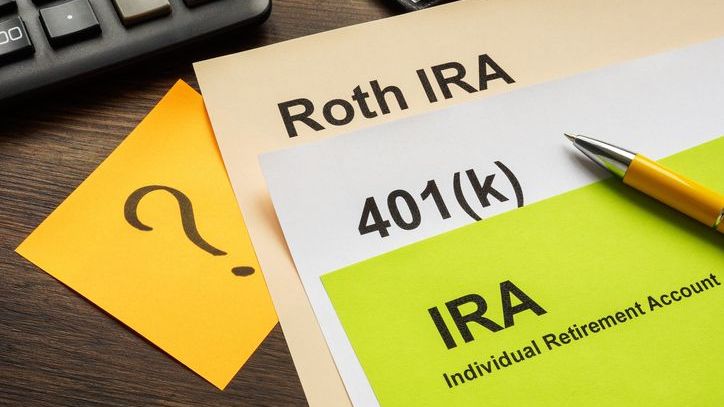

About one in five people in the United States collects Social Security benefits each month, according to the National Academy of Social Insurance. Though Social Security benefits provide some income to employees after they leave the workforce, you’ll probably need additional funds to lead a comfortable retirement. That’s where defined contribution plans come in.
A study by the Bureau of Labor Statistics found that 44% of private industry workers participate in a defined contribution plan. But what exactly is a defined contribution plan?
The IRS describes a defined contribution plan as “a retirement plan in which the employee and/or the employer contribute to the employee’s individual account.” Employees typically contribute a fixed percentage of their paycheck and the employer may also contribute some money to the account intended to help fund the employee’s retirement.
In most cases, defined contribution plans yield tax-deferred savings. Your total savings for retirement will depend on how much you’ve contributed over your working life, how much your employer has contributed, how long the funds have been invested and how well investments inside the plan perform.

The 401(k) is the most common and the most popular defined contribution plan. However, there are other options. The biggest differences are who can enroll. Learn more about all the different types of defined contribution plans below.
Since individual retirement accounts (IRAs) often entail defined contributions into tax-advantaged accounts with no guaranteed benefits, they could also be considered a defined-contribution plan.
All defined contribution plans work largely the same way. The employee elects how much they want to contribute, and the employer puts the money into an account on the employee’s behalf. Usually, an employee contributes a fixed percentage of their pay or a specific dollar amount. Contributions are deducted from the employee’s paychecks and placed into the account automatically. Many employers also agree to kick in some of their own money. This is known as a matching contribution, and it’s typically 50 cents for every dollar an employee contributes, up to a certain percentage of your salary (commonly 3% to 6%).
The employee decides how to invest their contributions, choosing from a selection of the plan’s mutual funds, money market funds, annuities or stocks. Thus, the individual employee assumes investment risk and rewards rather than the employer.
When an employee leaves his or her job, he or she still maintains ownership of the account. The contributions an employee makes are always his or hers. To fully own an employer’s match, an employee must become fully vested. If an employee leaves before he or she is fully vested, he or she will either be allowed to keep a portion of the employer match or they might lose it all.
Employees don’t have to contribute to a defined contribution plan. However, they’d be silly to miss out on the retirement savings opportunity. Defined contribution plans are tax-advantaged, which means that balances can grow larger over time when compared to taxable accounts. However, there are limits on how much you can contribute, which may change each year. In 2019, employees under 50 could contribute up to $19,000. The limit for 2020 will be $19,500. Employees over the age of 50 can make catch-up contributions, raising their maximum contribution limit to $26,000. While many experts recommend contributing the maximum amount allowed, employees should contribute at least the amount needed to qualify for their employer’s match program.
There are also restrictions on when and how much each employee withdraw from their defined contribution plans without facing penalties. Typically, employees face a penalty if they withdraw funds before reaching the age of 59 1/2.

There are more types of employer-sponsored retirement plans than just defined contribution plans. Employers can also opt for defined benefit plans, as well as pensions or cash-balance plans. Unlike a defined contribution plan, employers completely fund a defined benefit plan and bear the investment risks and the cost of administration. During retirement, the employee draws uniform checks from the company plan each month.
An employee’s earnings history, length of employment and other factors determines how much the employee will receive in benefits. Because benefits are not tied to market performance, employees can depend on receiving a certain amount of retirement income. Furthermore, the Federal Deposit Insurance Corporation (FDIC) usually protects benefits up to a certain limit.
As with defined contribution plans, defined benefit plans do have rules regarding withdrawals. The employee must show up for work and meet eligibility requirements. While employees must opt into defined contribution plans, they are automatically enrolled in defined benefit plans.
Sound like a great deal? Without the need to make investment decisions or fund the money yourself, defined benefit plans are much more attractive to employees. The increased financial security comes at a hefty cost for employers, though. They’ve become much less popular in recent years, as employees change companies and roles more often. As of 2008, only 20% of Americans had defined benefit plans. The number has fallen even further since then. If you still have a defined benefit plan at your company, consider yourself lucky. Most employees today have to take savings matters into their own hands and enroll in defined contribution plans.
Photo credit: ©iStock.com/marchmeena29, ©iStock.com/DNY59, ©iStock.com/DNY59
Liz SmithLiz Smith is a graduate of New York University and has been passionate about helping people make better financial decisions since her college days. Liz has been writing for SmartAsset for more than four years. Her areas of expertise include retirement, credit cards and savings. She also focuses on all money issues for millennials. Liz's articles have been featured across the web, including on AOL Finance, Business Insider and WNBC. The biggest personal finance mistake she sees people making: not contributing to retirement early in their careers.
Read More About Retirement


 out how many hours they can work after retirement." />
out how many hours they can work after retirement." />
More from SmartAsset
SmartAsset Advisors, LLC ("SmartAsset"), a wholly owned subsidiary of Financial Insight Technology, is registered with the U.S. Securities and Exchange Commission as an investment adviser. SmartAsset's services are limited to referring users to third party advisers registered or chartered as fiduciaries ("Adviser(s)") with a regulatory body in the United States that have elected to participate in our matching platform based on information gathered from users through our online questionnaire. SmartAsset receives compensation from Advisers for our services. SmartAsset does not review the ongoing performance of any Adviser, participate in the management of any user's account by an Adviser or provide advice regarding specific investments.
We do not manage client funds or hold custody of assets, we help users connect with relevant financial advisors.
This is not an offer to buy or sell any security or interest. All investing involves risk, including loss of principal. Working with an adviser may come with potential downsides such as payment of fees (which will reduce returns). There are no guarantees that working with an adviser will yield positive returns. The existence of a fiduciary duty does not prevent the rise of potential conflicts of interest.